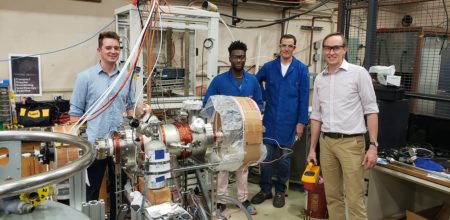
The SCTR would utilize the antiprotons by stopping all of the annihilation products In a Here's a diagram from Antimatter propulsion, status and prospects from waaay back in 1986. TL DR: solid core antimatter rockets basically are the same as solid-core nuclear thermal rockets, which is why they have pretty similar performance figures. Per the US Office of Nuclear Energy, the initial target for the specific impulse from a thermal nuclear rocket is about 900 seconds. There's only so far that a thermal rocket can go with regard to heating without having key parts of the rocket melt. This will have a specific impulse in the 800 to 1000 second range depicted in the graph. The graph appears to be depicting an engine that uses fusion, fission, lasers, or even matter-antimatter annihilation to heat hydrogen to a very high temperature and then emit that very hot hydrogen as the propellant. This is of course purely theoretical (i.e., pure science fiction). A solid core antimatter engine that emits pions at about 1/3 of the speed of light would have a specific impulse of about 10 million seconds.


A photon rocket has a specific impulse of about 30 million seconds (speed of light / g 0). The blob in question is not depicting a solid core antimatter engine or a photon rocket. The blob in question has a specific impulse of 800 to 1000 seconds and a thrust ranging from a bit more than one newton to beyond a kilonewton. To make it clear what is being discussed is the blob labeled "Nuclear, antimatter, laser (H 2)" in the graph below.


 0 kommentar(er)
0 kommentar(er)
